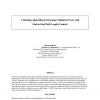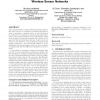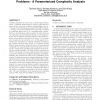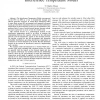154 search results - page 25 / 31 » On Boosting with Polynomially Bounded Distributions |
COMCOM
2000
13 years 9 months ago
2000
The new Path Length Control (PLC) algorithm establishes and maintains multicast trees which maximize the bandwidth to be shared by multiple receivers and which satisfy the maximum...
WISEC
2009
ACM
14 years 4 months ago
2009
ACM
Time synchronization in highly distributed wireless systems like sensor and ad hoc networks is extremely important in order to maintain a consistent notion of time throughout the ...
ATAL
2009
Springer
14 years 4 months ago
2009
Springer
Coalition formation is a key topic in multi–agent systems (mas). Coalitions enable agents to achieve goals that they may not have been able to achieve independently, and encoura...
INFOCOM
2007
IEEE
14 years 4 months ago
2007
IEEE
— The Interference Temperature Model was proposed by the FCC in 2003 as a way to dynamically manage and allocate spectrum resources. It would allow unlicensed radios to sense the...
COCO
2005
Springer
14 years 3 months ago
2005
Springer
We prove that if NP ⊆ BPP, i.e., if SAT is worst-case hard, then for every probabilistic polynomial-time algorithm trying to decide SAT, there exists some polynomially samplable ...




